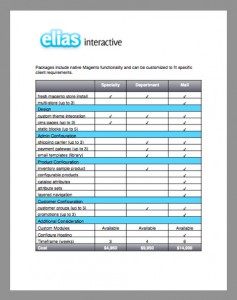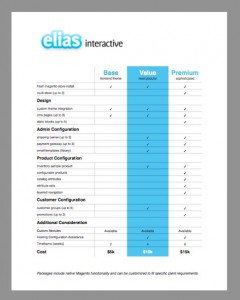Exceptional marketing is a formidable barrier to entry. At least that’s what Dharmesh Shan thinks. And given the success of his company, Hubspot, it might be smart to listen to him. Here is one of Mr. Shan’s thoughts on how to execute exceptional marketing:
Create content that kicks butt.
It’s really simple. If you produce things that are useful/interesting to your target customers — you win. You win by drawing people in to your business not because you had the largest marketing budget, but because you created something of value. The kind of stuff that people tweet about, link to in their blogs and and share with their friends. That’s magical. The type of content can be varied. At my startup HubSpot, we’ve tried lots of different things: “normal” blog articles, music videos, parody videos, songs, cartoons — and of course, free marketing tools. For most startups, if you took every dollar you would have spent on advertising to try and beat your prospects over the head in the hopes that they’ll buy from you and instead spent that dollar on actually producing useful content, you’d win. Seriously win. This worked so well for us that almost all of our increase in marketing spend is allocated towards hiring people that can produce content. They make videos, write blogs, create research reports and develop software tools. The beauty of this content is that long after you’ve invested in creating it, it’ll continue to generate traffic and leads. To this day, some of the early articles I wrote for our marketing blog drive consistent cash into our bank account. We don’t have to spend a penny for those leads. I’ll summarize again in four words: Create content. It works.
I’ve been trying to follow this strategy since the inception of Elias Interactive. It’s simple hard. Writing a blog is not difficult. In fact, there is something therapeutic about communicating thoughts, ideas, and observations via a blog. Writing awakens the creative side of me. But blogging after a day of coding, following up with new prospective clients, and balancing the books is hard. I think this is true of most small companies where the founders must wear several hats. And so creating content is usually the first item on the to-do list to be pushed to another day or time.
Why we focus on creating content at Elias
Putting off creating content is not smart because content works – at least it has for Elias. We don’t spend money on marketing because we work hard to keep up with the clients and prospects who are already contacting us to ask for help with Magento. Most of this steady stream of new business comes from reading this blog or twitter or an answer to some question on Magento’s forum. Without this blog we would have to work a lot harder to find new clients and build trust. Content works.
But the benefits of content are not immediate. I have a theory about sales and marketing: results trail effort by 3-6 months. So what you do today to bring in new business will have an effect on your business in about 3-6 months. That’s why consistency is so imperative; and why ignoring content for too long will have a negative effect on business in a few months.
Help Wanted
We are about to roll out a new website platform here at Elias that will give us a solid foundation to better serve Magento users. I need help creating content for this platform: things like blog posts, pictures, tweets, tips, solutions to Magento, examples of excellent online stores, webcasts, or anything else that might add value to the community. If you are interested in working with us on content then write a comment below or drop me a note at josh[at]eliasinteractive.com. I’m interested in how we can help one another.




